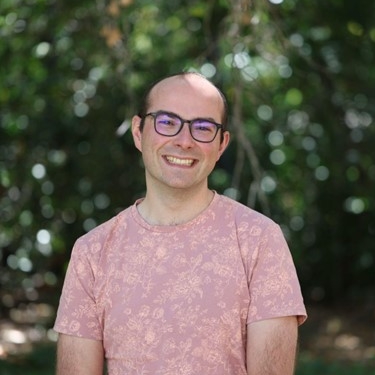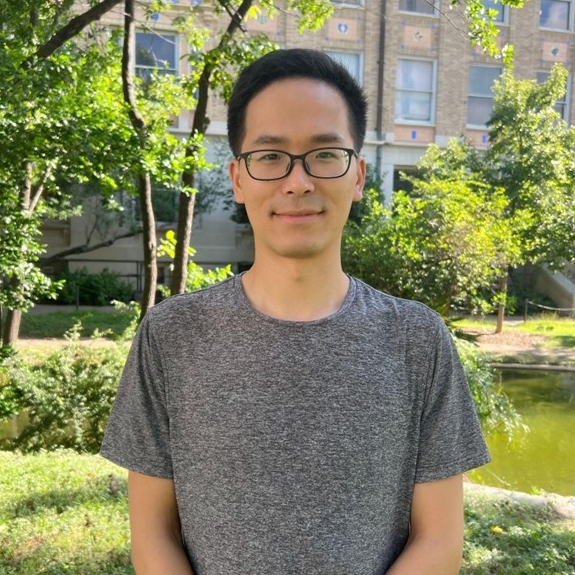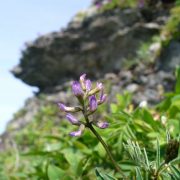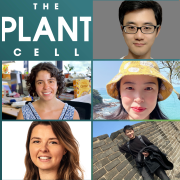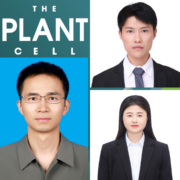The Plant Cell Features July First Authors
Behind the manuscripts are researchers, professors, professionals and students dedicated to advancing the field of plant science. You’ve seen our First Authors on Twitter and Facebook— now, read more about why they chose to pursue plant sciences and click on the links to read their articles.
Adrien Burlacot
Adrien Burlacot (he, him, his) is the first author of Alternative electron pathways of photosynthesis power green algal CO2 capture published 13 May 2024. He is a Principal Investigator at Carnegie Institution for Science and Assistant Professor at Stanford University.
Education background includes: 2019 PhD. Plant Science at University of Aix-Marseille (France); 2016 Msc. Plant Science at University Paris Saclay (France); 2016 Msc Engineering at Ecole polytechnique (France); 2013 Bsc Engineering at Ecole polytechnique (France). Research interests are Photosynthesis, Algae, Miroalgae, Ecophysiology. Personal interests include Triathlon, cycling.
Plants (including microalgae and cyanobacteria) are amongst the only organisms that use our sun as a sustainable source of energy to produce biomass.
Na Young Kang
Na Young Kang is the first author of HIGH PLOIDY2-mediated SUMOylation of transcription factor ARR1 controls two-component signaling in Arabidopsis published 31 May 2024. Kang is a Research Associate at Chonnam National University. Education background includes: 2004 MSc Biology at Chonnam National University; 2002 BSc Life Sciences at Chonnam National University.Research interests include Plant hormone, Abiotic stress.Personal interests include Reading a book, Watching a baseball game.
“Growing up in the countryside, I had the opportunity to observe the seasonal changes in plants, which evoked my love for botany. This passion continued to grow, and after completing my master’s degree, I started my first job, where I became deeply immersed in plant science through my research on Arabidopsis.”
Min-Jung Kim
Min-Jung Kim is the first author of HIGH PLOIDY2-mediated SUMOylation of transcription factor ARR1 controls two-component signaling in Arabidopsis published 31 May 2024. Kang is a Postdoctoral fellow at Chonnam National University. Research Associate at Chonnam National University. Education background includes a 2015 PhD Plant Molecular Biology at Chonnam National University; 2007 MSc Plant Molecular Biology at Chonnam National University; 2004 BSc Agricultural Biology at Chonnam National University. Research interests include Plant development, Plant reproduction, Hormone signaling. Personal interests include Knitting (crochet) and watching a movie.
‘I was captivated by the diverse shapes and colors of plants. As I explored life sciences more deeply, I became intrigued by the signaling processes that enable immobile plants to adapt and survive in changing environments. Furthermore, uncovering new facts through experimental science gives me the exhilarating feeling of completing the final piece of a puzzle.”
Liping Che
Liping Che is the First Author of RESISTANCE TO PHYTOPHTHORA1 promotes cytochrome b559 formation during early photosystem II biogenesis in Arabidopsis published 04 July 2024.
Che is a PhD at Shanghai Normal University. PhD, Biology, Graduate Biological Science at Shanghai Normal University. Research interests include Photosynthesis in Arabidopsis Thaliana. Personal interests include painting.
“I am curious about nature, so I am very interested in the subject of biology.”
 Hong Chen
Hong Chen
Hong Chen (she/her) is the first author of A cargo sorting receptor mediates chloroplast protein trafficking through the secretory pathway published July 4 2024. She is an Associate Professor at Ningbo University. Education background includes: 2019 Ph.D China Agricultural University; 2013 BSc Sichuan Agricultural University Research interests are Abiotic stress, Photosynthesis, protein trafficking Personal interests include Reading.
“Plant science offers a wide range of opportunities to study plant biology, ecology, genetics, and more. The intricate ways in which plants interact with their environment and contribute to ecosystems can be both fascinating and rewarding to explore. Additionally, the potential applications of plant science in areas like agriculture, medicine, and sustainable resource management make it a field with significant real-world impact.”
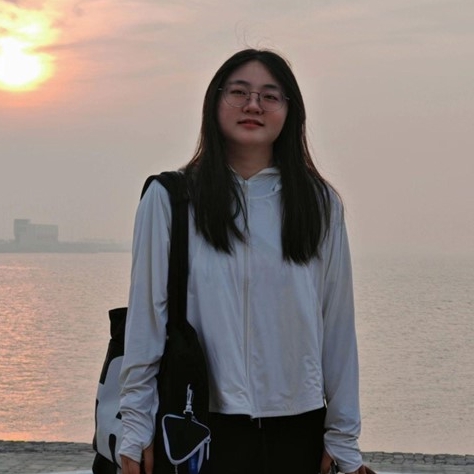 Jinling Liu
Jinling Liu
Jinling Liu (she/her) is the first author of A cargo sorting receptor mediates chloroplast protein trafficking through the secretory pathway published July 4 2024. She is a Ph.D at China Agricultural University. Education background includes: 2024 Ph.D Genetics at China Agricultural University; 2017 BSc Biological Sciences at Fujian Agriculture and Forestry University.Research interests are Secretory pathway, Abiotic stress. Personal interests include playing badminton, rope skipping.
“Someone who has inspired me in my research is Dr. Jiangli Dong. She was my mentor when I was a PhD student. When I encountered difficulties in the research process, she guided me with her profound professional knowledge so that I could quickly find the direction of the solution. She always inspired me to be a better researcher.”
Xingbo Cai
Xingbo Cai (He/His) is the first author of PHOSPHATASE 2A dephosphorylates PHYTOCHROME-INTERACTING FACTOR3 to modulate photomorphogenesis in Arabidopsis published July 12 2024. He is a Ph.D. student at The University of Texas at Austin.Education background includes: 2018-2024 Ph.D. in Molecular Biosciences at The University of Texas at Austin, USA ; 2013-2016 M.S. in Cell Biology, Hebei Normal University, China; 2009-2013 B.S. in Biology Sciences, Hebei Normal University, China. Research interests are Plant biology.
Personal interests includeTravelling and enjoying gourmet food.
“My enthusiasm for plant research stems from my innate love for plants. As a child, I loved plants, and my yard was filled with various kinds. I first encountered plant science research while working on my undergraduate thesis in Dr. Tang Wenqiang’s laboratory at Hebei Normal University in 2013. That’s when my scientific research career began. I am grateful to Dr. Tang for his guidance. He not only taught me many experimental techniques but also instilled in me a deep love for scientific research. After graduating with a master’s degree, I joined Dr. Enamul Huq’s laboratory as a doctoral student in 2018. Dr. Huq is a kind and great scientist, and he provided me with ample support and help during my doctoral research. From then on, my passion for plant science research was further strengthened.”
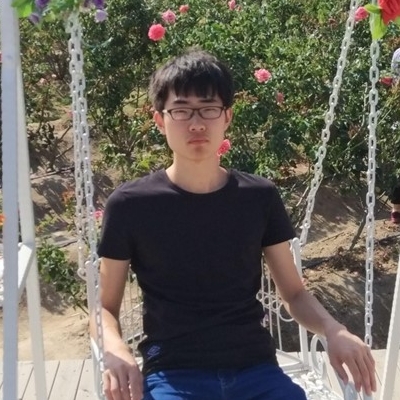 Chu Lei
Chu Lei
Chu Lei (he/his) is the First Author of ASYNAPSIS3 has diverse dosage-dependent effects on meiotic crossover formation in Brassica napus published 24 July 2024. He is a Ph.D student at National Key Laboratory of Crop Genetic Improvement, Hubei Hongshan Laboratory, Huazhong Agricultural University, Wuhan, China. Education background includes a 2018 Bachelor of Engineering at Hainan University. Research interests include plant meiosis.Personal interests include traveling and singing.
“I developed my interest in plant science during my undergraduate studies in Biology. In September 2018, I was enrolled as a master student at Huazhong Agricultural University, Wuhan, China, and developed further interests in plant research under the guidance of Prof. Dr. Bin Yi. Since 2021, I pursued my PhD study in the lab of Prof. Dr. Chao Yang and have been focusing on the research of plant meiosis using Arabidopsis thaliana and Brassica napus as models. In this paper, we aimed to address the functional importance of the chromosome axis protein ASY3 in meiotic recombination. Through making use of the tetraploid nature of Brassica napus, we unravel that ASY3 shows dosage-dependent diverse effects on meiotic crossover formation, providing insights into the role of chromosome axis and synaptonemal complex in CO patterning. Since ASY3 is wildly present in a variety of crop species, this work offers a promising target for modifying the CO efficiency for crop breeding. In the future, I will continue to devote myself to the research of meiotic recombination and explore its applications in crop breeding.”


